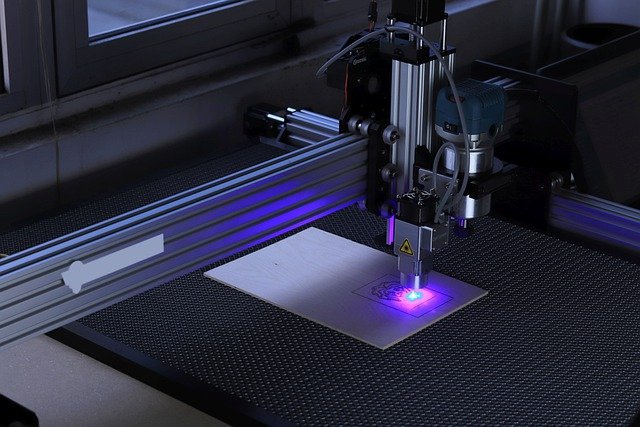
LASER ENGRAVING: HOW DOES IT WORK?
How does laser engraving work and what is it?
A laser engraves permanent, deep marks by vaporizing materials into fumes. By removing layers from the surface of the material, the laser beam acts as a chisel, cutting markings. Lasers produce high temperatures required for vaporization when they strike localized regions with massive amounts of energy.
The purpose of this article is to provide in-depth information about laser engraving and how to find a laser engraving machine.
Which is Better: Laser Engraving or Laser Etching?
You should consider three factors when selecting a laser marking process:
- Resistant to harsh conditions: its ability to remain legible
- It is the laser marking speed that prevents bottlenecks in production
- Compatibility of the marking method with the material being marked
Metal workpieces that are subjected to various types of wear and surface treatments are usually engraved with laser technology. A metal engraving machine can work with steel and aluminum (including anodized and die-cast aluminum).
A major benefit of this process is that it can engrave 2D codes that retain high readability rates after post-processing. Traceability issues may be addressed by shot blasting, e-coating, or heat treatments.
Laser etching, on the other hand, is often preferred if engraving the most resistant identifiers isn’t needed since it’s a high-speed process that relies less on ablation.
Solids to Gas: The Process
Laser etching changes the surface of a material by melting it; laser engraving changes the surface by sublimating it. Therefore, the surface instantly becomes a gas and never becomes a liquid by absorbing enough energy.
A laser engraving system that produces enough energy must reach the vaporization temperature of the material within milliseconds in order to achieve sublimation. Laser engravers are pretty powerful machines considering the extreme temperatures required for sublimation.
As soon as materials reach this temperature, they vaporize into fumes. In order to protect your work environment and the laser’s lens, laser systems should always come with a fume extraction system.
Because fiber lasers produce a wavelength that reacts well with metals, they make ideal engraving tools.
Laser Engraving Machines for sale
You can use the list below to find the right laser engraving machine for your needs:
- Our OEM marking systems include a variety of lasers for industrial applications that can be integrated by yourself or with an integrator. CO2 lasers and fiber lasers cover our range of laser marking systems.
- Check out our integrated laser machines page for turnkey automated and semi-automated laser solutions.
- You can find specific information about the metal you’ll be marking by scrolling through the list of metals.
- Ask an expert for guidance if you need it.
Is it Possible to Engrave Marks With High-Contrast and High-Quality?
Because of the deep crevices that laser engraving creates, permanent marks are darker (engraving depth can reach 0.5 mm).
When you laser engraves a surface, there are two ways to create contrast.
In the first (and faster) engraving method, the bare material contrasts the black marks that are engraved. Unless the color of the base material is pale enough to generate a high contrast, this method isn’t recommended.
Because the second (and longer) engraving method engraves both black and white marks, the contrast is higher. Laser etching (for creating the white marks)and laser engraving (for creating the black marks) are both used in this method.




